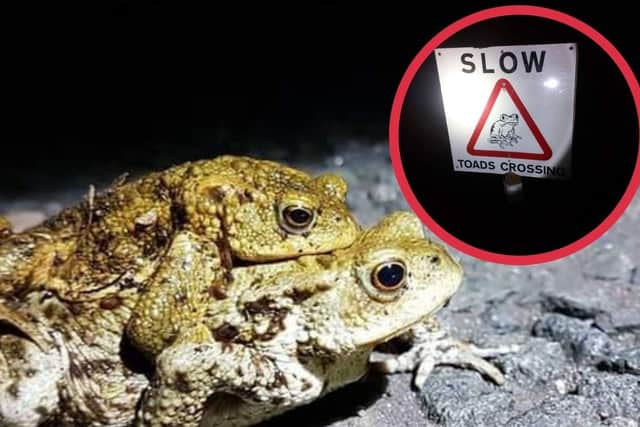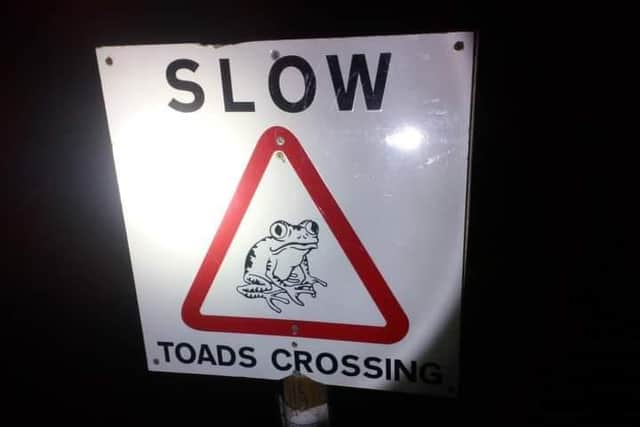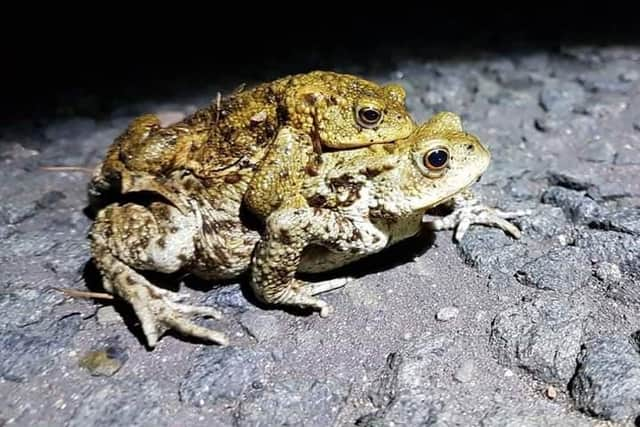'Toadageddon': Holyrood Park road closed to make way for Edinburgh's great toad migration
and live on Freeview channel 276
Park rangers at Holyrood have shut the road between the bottom of Arthur's seat to Dunsapie loch during the toad migration.
The rangers from Historic Environment Scotland also put metal covers over the drains to stop the toads from falling in and drowning.
Advertisement
Hide AdAdvertisement
Hide AdGary Hovell, a local amphibian and reptile expert said: "Historically, before covid, the rangers would shut the roads down around February and put up signs saying ‘The road’s closed for toads’.”


“On a good night, we can expect about 500 toads in the Arthur’s seat area during the toad migration which lasts up to two to four weeks in Spring. ”
Due to growing infrastructure, many of the Edinburgh amphibians are getting killed on roads by vehicles, pedestrians, cyclists and joggers.
In Edinburgh, a toad site at a pond in Little France was found next to a new housing development.
Advertisement
Hide AdAdvertisement
Hide AdHowever, due to this site being beside a busy bus route, Mr Hovell commented that hundreds of toads have been killed trying to make their way to the pond.


In the UK, the toad population has declined by 70% in the last 30 years, according to research from Save The Frog.
Mr Hovell who leads the Lothian Amphibian and Reptile group aiming to protect toads in the Capital said: "The more developments we have in Edinburgh then there’s more pressure being put onto the toads’ habitat.”
“They wake up from a mild hibernation and make their way to the pond to breed and that’s when they get killed by cars - males will be waiting on the roads for the females.”
Advertisement
Hide AdAdvertisement
Hide AdMr Hovell is hoping that more ‘toad patrols’ can be in force across the Capital as well as measures such as drain coverings to combat toad deaths.


He added Edinburgh Council has been ‘very good’ at handling the ‘toadageddon’.
LARG – which is made up of local volunteers – have already rescued around 1,000 toads and frogs from Edinburgh roads in the past week.
The team is hoping to continue their work through the support from the local community who they are encouraging to report ‘toad incidents’ via email or over their social media pages.
A message from the Editor:
Thank you for reading this article. We're more reliant on your support than ever as the shift in consumer habits brought about by Coronavirus impacts our advertisers.
If you haven't already, please consider supporting our trusted, fact-checked journalism by taking out a digital subscription.
Comment Guidelines
National World encourages reader discussion on our stories. User feedback, insights and back-and-forth exchanges add a rich layer of context to reporting. Please review our Community Guidelines before commenting.